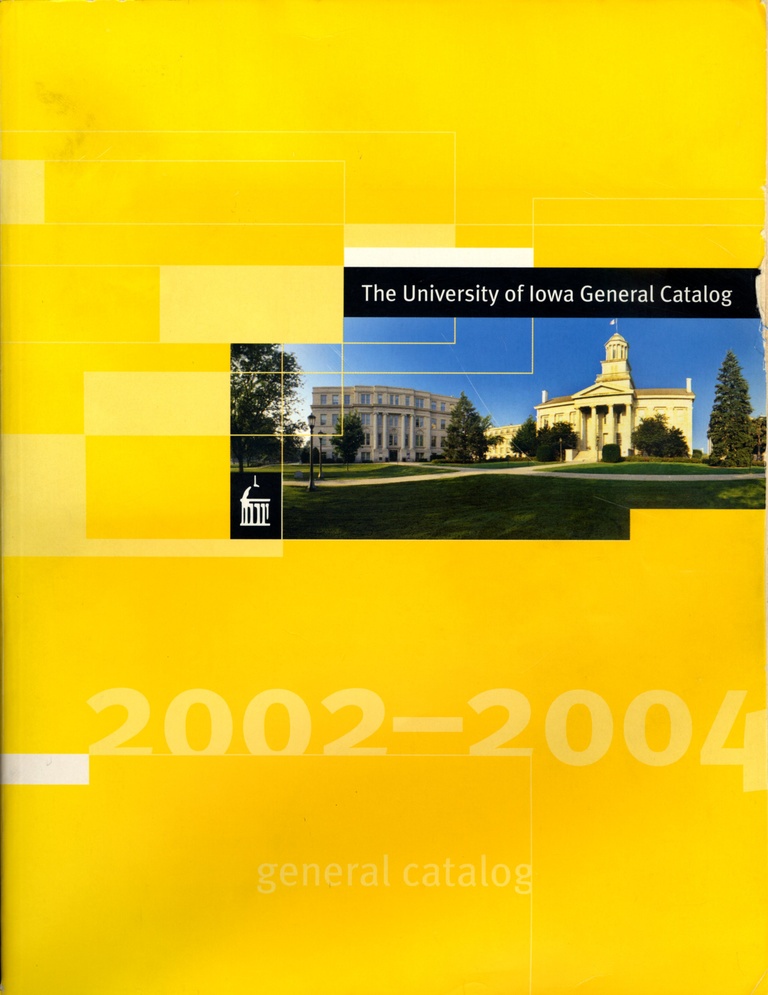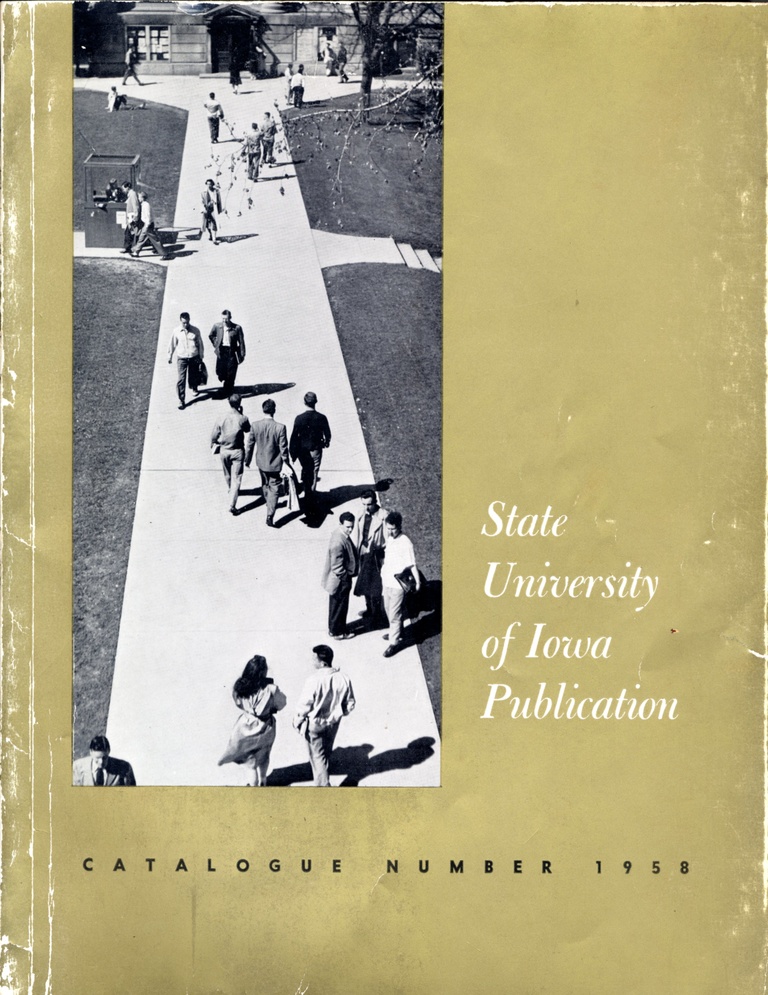
Remember wish books—those bulky, heavy, multi-hundred-page catalogs that arrived in the mail from Sears, J.C. Penney, and Montgomery Ward? They were a staple in millions of households for decades, only to be rendered extinct by the internet and changes in consumer spending habits. Sears stopped printing its big catalogs in 1993; today, those that survive are objects of curiosity in second-hand shops.
For nearly 150 years, the University of Iowa published its own version of the wish book: the General Catalog. Offered for the first time in 1855 as an eight-page circular, the catalog grew to 699 pages in its 2002–04 edition, the last printed copy available. Since then, the catalog has been offered exclusively online. The catalog was published annually until 1972, then biennially until 2004, and annually again (and continuously) when it went online.
Like outdated wish books or phone directories, the printed UI general catalogs were typically tossed out as new replacement editions arrived. For many reasons, however, the University Archives maintains a complete set, including post-2004, born-digital editions. The reasons we keep previous catalogs are as varied as our users’ needs.
Let’s say you are applying for graduate school and the institution requires a description of the courses you completed as an undergraduate at Iowa. This information isn’t included in your grade transcript, which is maintained by the Office of the Registrar, but is still considered a peripheral part of a student’s record if summoned. In those instances, the archives can provide course descriptions upon request, thanks to its university-publication retention policy.

Or say you are the family’s unofficial historian, performing genealogical research. The General Catalog can shed light on a great-grandmother’s academic life at Iowa in the 1920s, which helped to inform and influence her life in the years to follow. In addition to course listings, the catalogs include information about university policies and regulations, tuition and fees, and other useful information.
Through the years, the General Catalog has offered a wealth of information about the university: awards and scholarships offered, campus maps (after 1901), enrollment data, names of faculty and staff (including rank and degrees held), graduation requirements, names of graduates and degrees awarded during the previous year (until 1940–41), names of students registered for classes (until 1934–35), and more.
General catalogs dated 1970 to the present are available on the web as part of Iowa Research Online, the University of Iowa Libraries’ digital institutional repository. Go to ir.uiowa.edu/registrar_catalogs and select the desired year. Earlier editions are not yet online but may be accessed in the reading room of the Department of Special Collections in the Main Library.
When it comes to discussions related to university history, the general catalogs are great argument settlers, like any authoritative reference resource. It’s also one of Old Gold’s favorite referees.
Read more Old Gold columns on Iowa Now.